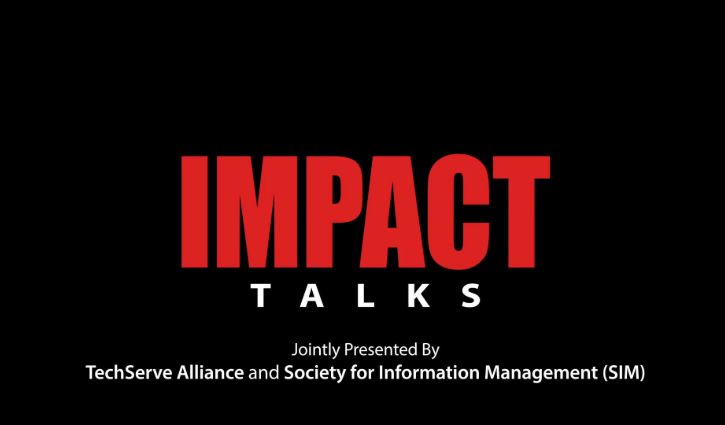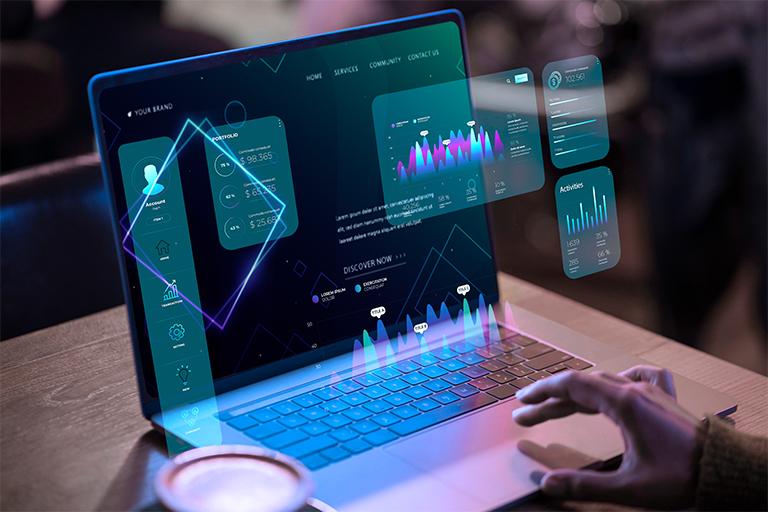Casting a wider net by diversifying the IT and engineering talent pool with DEI
In 2022, the ability to efficiently scour a high volume of candidates to source and hire top-tier talent will be a distinct competitive advantage. It stands to reason that when a company limits the talent pool from which they hire, they stand a much lower chance of getting the best people to fill the positions needed. In 2022, no industry — whether private, public, non-profit, or a government agency — can afford to ignore Diversity, Equity, and Inclusion (DEI) initiatives in their sourcing and recruiting strategy.
Diversity improves team performance, and we have decades worth of data to prove it. A diverse workforce – one where different thought processes and different ways to look at problems or challenges are celebrated and encouraged – can help a company stay innovative and current in a fast-changing economic landscape. This is one of the main reasons why diversity is not enough. It must come with inclusion. This means that the diversity in a company’s workforce must be empowered to express its diversity. If people are actively participating in your organization and feel inspired to achieve their full potential, they will be far less likely to seek opportunities with other companies.
“Diverse and inclusive businesses outperform their homogeneous competitors in innovation, employee retention, talent recruitment, profit, and many other business metrics that lead to long-term growth,” reported the US Chamber of Commerce.
Employee engagement is currently a top priority, especially as the war for talent intensifies. If your people are actively participating in your organization and feel inspired to achieve their full potential, they will be far less likely to seek opportunities with other companies. Deloitte found that businesses that are more diverse are also more engaged. And this is no easy task given there are currently five generations, ranging from aging baby boomers to Generation Z, in the workforce today.
Leaning into 2022
This is a time when action is necessary, and to do that we need to challenge our perceptions. Just because companies support diversity initiatives doesn’t mean they don’t have unconscious biases — subconscious associations that they don’t consciously agree with. That is why we have put together a collection of on-demand clips from our TechServe Alliance Executive Summit to inform and present some alternate resources to enhance pipeline diversity.
Eliminate the College Degree Requirement!
According to Roland Selby, Vice President Strategic Partners, NPower, “That 4-year-degree requirement will eliminate 70% of African American and LatinX candidates.”
Job requirements have long been a method of gatekeeping and communicating the expectations of a role to a potential candidate. However, they often focus on highly specialized skills or knowledge. This overemphasis on “hard skills” without factoring or even disregarding relevant “soft skills” is something many companies may have to rethink in an era of low retention and a broader workforce in need of reskilling or upskilling.
What is overlooked is that skills can be taught. What can’t be taught are values, the ability to communicate, good time management, a growth mindset or a strong work ethic. Some of the required skills companies list in job descriptions frequently deter diverse candidates from consideration even though they exhibit attributes of learning the technical aspects quickly while already possessing the soft skills needed for success.
NPower recognizes the challenges that degree inflation – the requirement of a 4-year degree for entry level positions – presents. Their solution is to provide training, licenses and certifications via an alternative route to traditional post-secondary options. They work with their partners and organizations to address gaps, assess performance and up skill graduates. Their tailored programs also include specific tracks for veterans and women of color.
For women, the feeling of not possessing all the necessary skills tends to be a major hurdle. According to an internal report from Hewlett-Packard, women only apply for a job if they meet 100% of the qualifications, whereas men will try if they meet as little as 60%. Even as recently as 2018, LinkedIn confirmed recruiters were 13% less likely to click into a woman’s profile when she showed up in a search. In 2022, they’re still 3% less likely to do so. (Gender Insights Report) The takeaway? Unconscious bias toward Underrepresented Minorities (URMs) in sourcing occurs even when URMs are doing the sourcing. NPower’s Command Shift program addresses the under-representation of women of color in technology.
HBCUs: The Untapped Technology Talent Pool
Similarly, African American and LatinX candidates are often overlooked by recruiters. The Leading Niche is working to diversify the candidate pipeline by networking Historically Black College and University (HBCU) with sourcers.
Dr. Tamara Nall, president and CEO of the Leading Niche, shared some notable statistics on HBCUs:
- 44% of African Americans with bachelor’s degrees in Communications Tech graduate from an HBCU
- 33% of those in Engineering and Technology graduate from an HBCU
- 43% African Americans in Mathematics graduate from an HBCU
- 25% STEM grads graduate from an HBCU
- 35% Comp Science graduate from an HBCU
- 30% Science and Engineering Doctorates graduate from an HBCU
By expanding job requirements to include the skills and traits of people from different education and experience levels, companies can focus on potential and how well a person will fit within the organization rather than merely being focused on their ability to complete tasks. This approach will also open positions to a wider, more diverse pool of candidates.
Neurodiversity in Technology
Though the diversity of gender and race is often talked about in hiring, a commonly overlooked aspect is neurodiversity. Currently, there’s still a stigma against hiring people who are neurodiverse. A lot of these are the lingering prejudices and misconceptions that have plagued us for decades, most of which are rooted in outdated ideas and myths. The neurodiverse candidates may possess many skills that would produce unique solutions for business challenges, said Marcus Murph, Partner, KPMG.
The pandemic has put renewed focus on mental health and with that, companies are starting to reevaluate their traditional hiring processes that often present a barrier to hiring more neurodiverse candidates. Marcus Murph provides some actionable steps organizations can take to change how we source and recruit neurodiverse talent — from job descriptions, interviewer training, revamping the one-day interview to rethinking the office environment.












